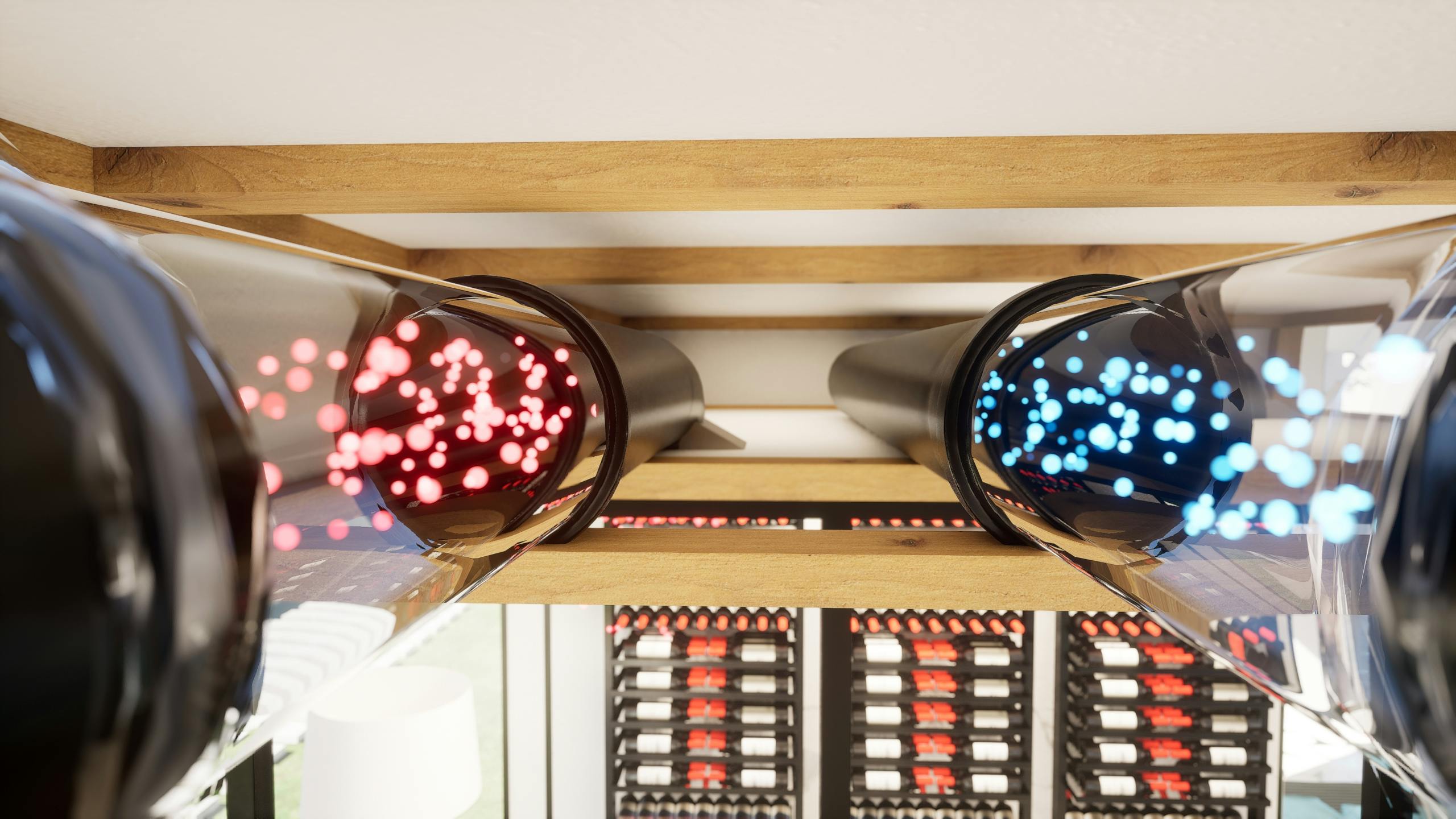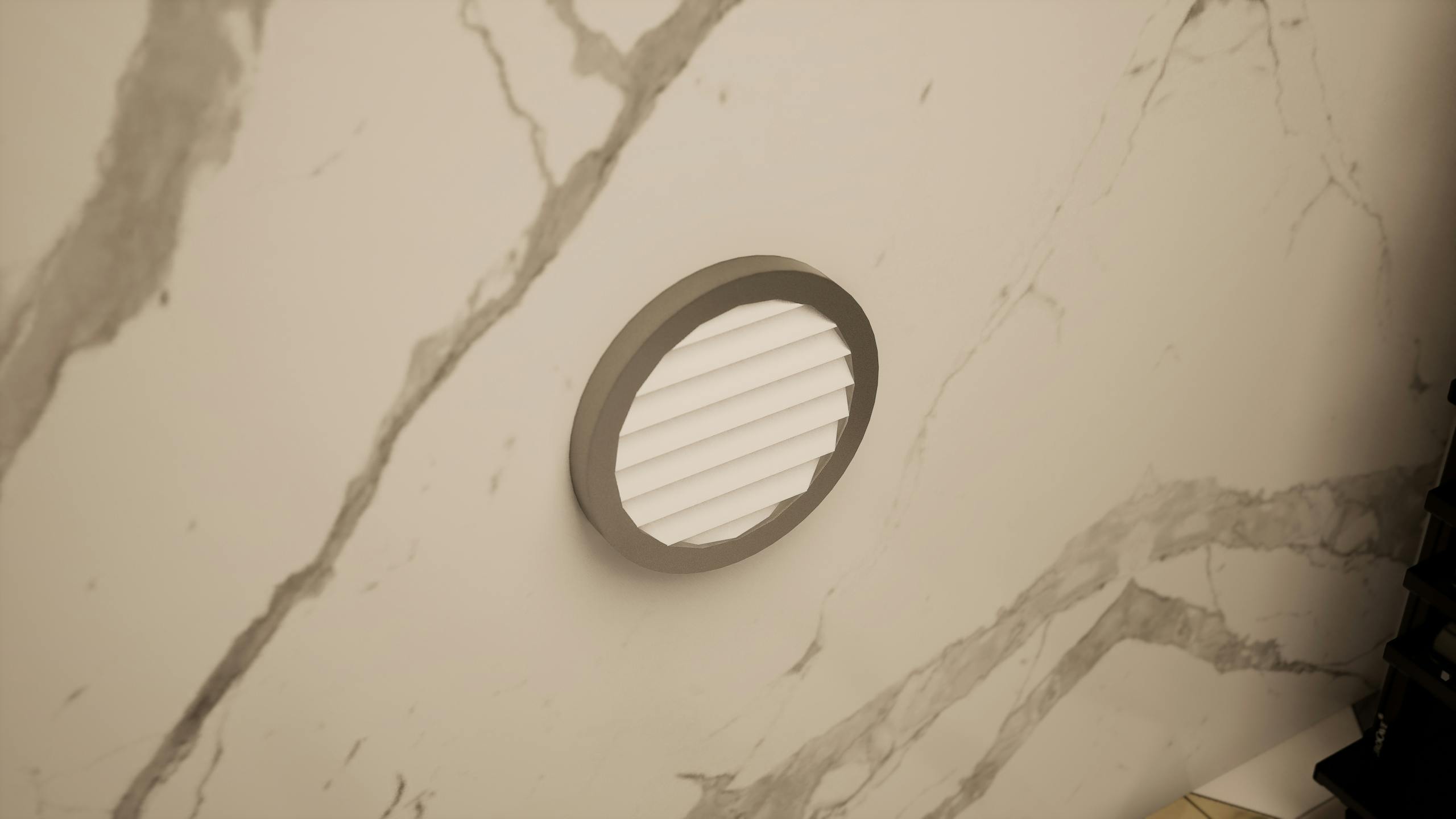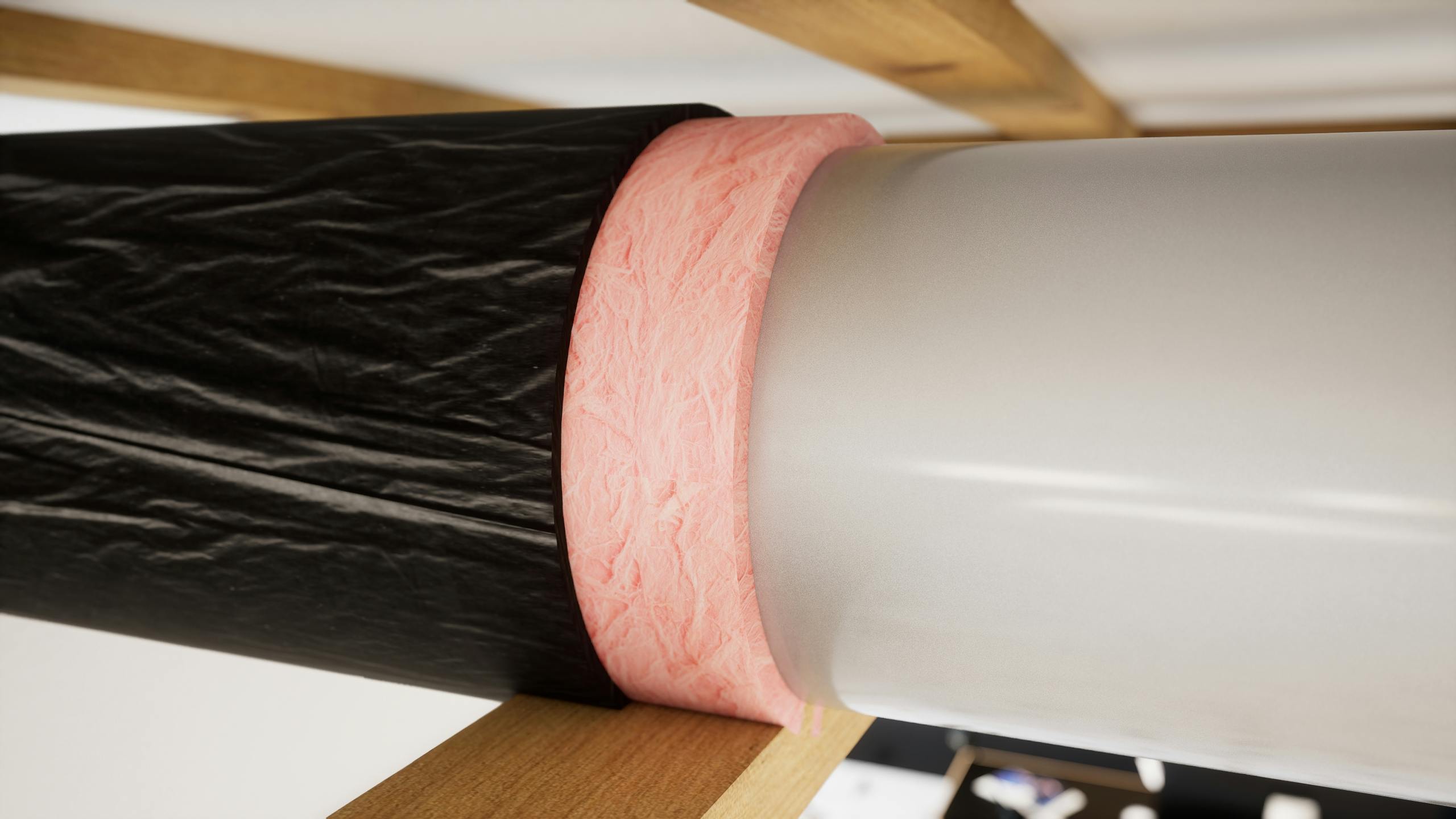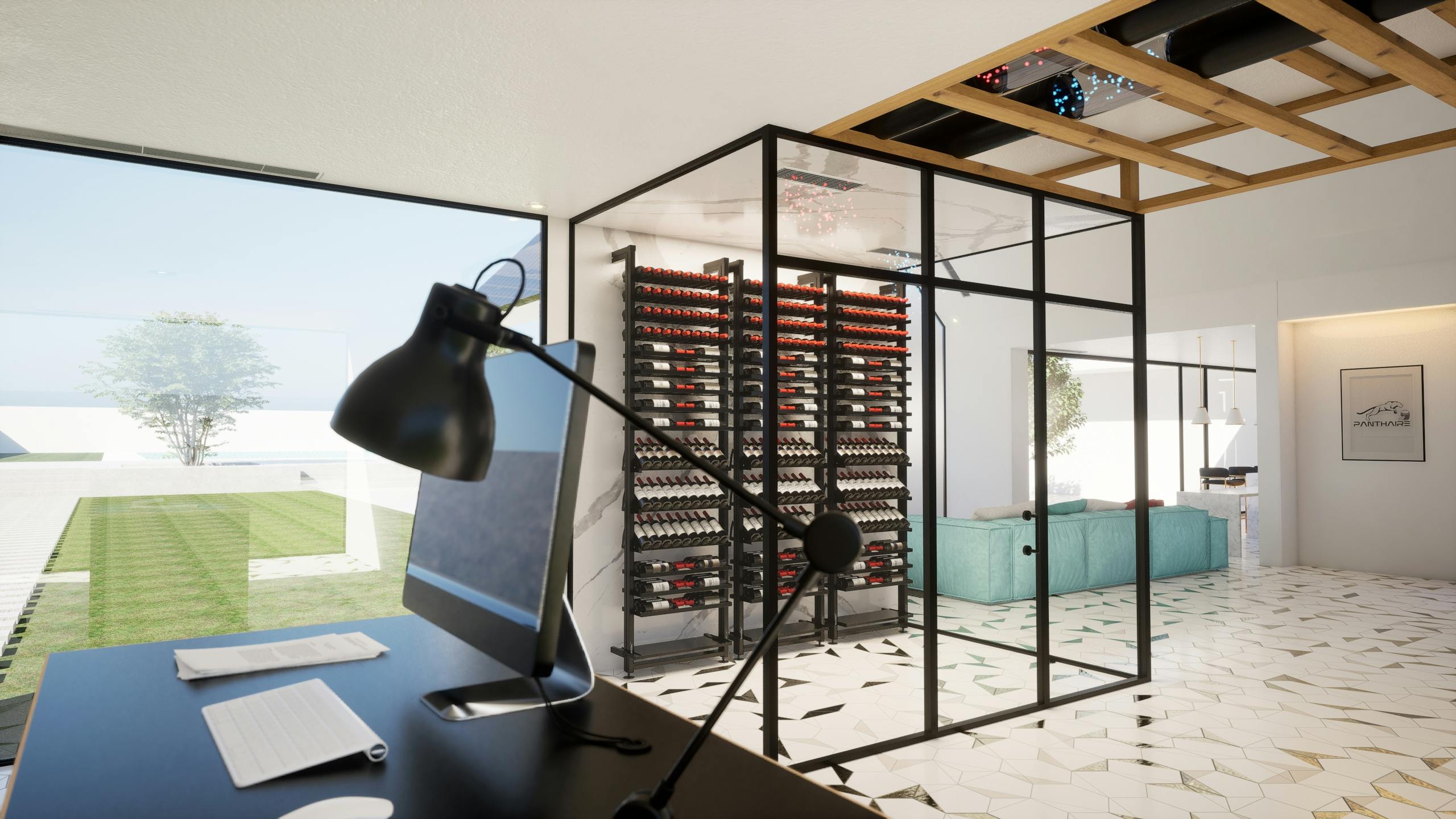Ductwork guide (sizing, vent positioning, insulation)
Ducted Wine Cellar Cooling
A quiet, stable wine room starts with the right ducted wine cellar cooling design. This guide covers duct sizing, supply-high/return-low vent placement, and insulation so your cellar holds a steady temperature with minimal noise.
Duct sizing for ducted wine cellar cooling
Correct duct diameter keeps air velocity in the quiet range, protects efficiency, and reduces wear. Undersized ducts raise velocity → vent noise and pressure drop. Size correctly so air moves quietly and the system runs shorter, steadier cycles.
APEX duct sizes & run length
- APEX 3500 / 5000: 8-inch supply and 8-inch return
- APEX 7000: 8-inch supply and 10-inch return
- Run length: keep each individual run ≤ 25 ft for best performance and low vent noise.

Supply high / return low — balanced airflow
Place supply grilles high to wash the display with conditioned air; locate returns low to pull warmer air back. This supply-high/return-low pattern evens out temperature and keeps the tasting area quiet.
Supply Vent Guidelines
- Mount high on the wall or soffit (above racking height).
- Keep clear of bottle faces to avoid drafts on labels/caps.
- For multiple grilles, space ≥ 4 ft apart and avoid aiming supplies at each other.
Return Vent Parameters
- Install low and across from supplies to prevent short-circuiting.
- Keep a clear path back to the return from the far end of the room.
- As a rule of thumb, return free area ≥ supply (often ~25% larger) for easy airflow.

Vent grilles for ducted wine cellar cooling
Common:
- 8-in for APEX 3500/5000
- 10-in return for APEX 7000
Duct insulation to prevent condensation & noise
Use insulated duct to keep air cold and prevent condensation on duct walls. Insulation also dampens sound so the room stays quiet. Seal every joint so moisture can’t escape into ceilings or walls.
Insulation & sealing standards
- Minimum: R-6 insulated flex or equivalent
- Preferred: R-8 for colder spaces or longer runs
- Seal every connection (mastic + tape) to stop leaks and sweating
- Support ducts at proper intervals so they don’t sag and choke airflow

Acoustic performance (what quiet feels like)
With the unit outside the room, you should hear gentle air at the grille—nothing more.
If you hear...
- Hiss at the vent: check for undersized grilles/ducts or tight bends.
- Vibration: add isolation/supports; verify ducts aren’t hard-coupled to framing.
- Equipment noise in the room: confirm the unit is remote and runs are insulated.
Need help sizing? Start with the wine cellar cooling calculator

FAQ
Common questions related to ducting your unit